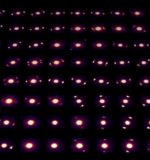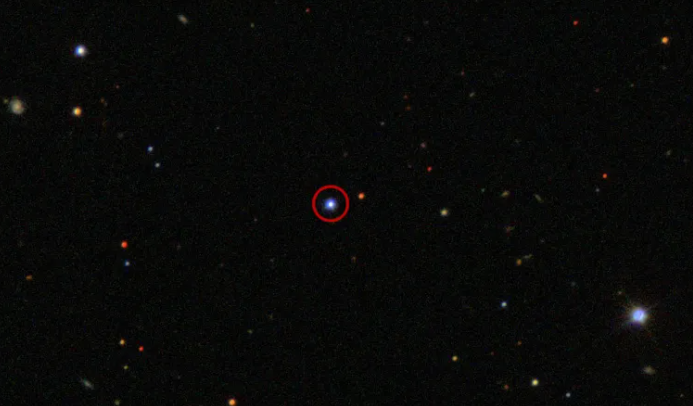Electron microscopes are great at producing high-resolution images of a material’s atomic structure – if the material is hard, that is.
Unfortunately, the devices’ electron beams can destroy softer materials, so scientists typically rely on X-rays, which can’t reach atomic resolution, to image those.
But scientists at the Department of Energy’s Lawrence Berkeley National Laboratory have published a pair of studies in the journals Nature Communications and Nature Materials showing how a technique called 4D-STEM allowed them to use electron microscopy to image soft materials without destroying them.
And the images resulting from their research are downright gorgeous.

Double Time
According to a newly published press release, the Nature Communications study focused on the use of 4D-STEM to image bulk metallic glass, which has an unpredictable molecular structure.
This allowed the researchers to identify atomic-scale weak points in the material that could ultimately cause it to fracture under stress.
For the Nature Materials study, meanwhile, the researchers used the 4D-STEM technique to image the molecular ordering in a semiconductor before and after the introduction of a processing additive – research that, according to the press release, could impact the field of solar energy.
“[I]n these studies, we’ve shown that when 4D-STEM is deployed with our high-speed detectors, customizable algorithms, and powerful electron microscopes, the technique can help scientists map out atomic or molecular regions in any material – even beam-sensitive, soft materials – that weren’t possible to see with previous techniques,” lead researcher Andrew Minor said in the press release.








 Photographer Finds Locations Of 1960s Postcards To See How They Look Today, And The Difference Is Unbelievable
Photographer Finds Locations Of 1960s Postcards To See How They Look Today, And The Difference Is Unbelievable  Hij zet 3 IKEA kastjes tegen elkaar aan en maakt dit voor zijn vrouw…Wat een gaaf resultaat!!
Hij zet 3 IKEA kastjes tegen elkaar aan en maakt dit voor zijn vrouw…Wat een gaaf resultaat!!  Scientists Discover 512-Year-Old Shark, Which Would Be The Oldest Living Vertebrate On The Planet
Scientists Discover 512-Year-Old Shark, Which Would Be The Oldest Living Vertebrate On The Planet  Hus til salg er kun 22 kvadratmeter – men vent til du ser det indvendigt
Hus til salg er kun 22 kvadratmeter – men vent til du ser det indvendigt  Superknepet – så blir snuskiga ugnsformen som ny igen!
Superknepet – så blir snuskiga ugnsformen som ny igen!  Meteorite That Recently Fell in Somalia Turns Out to Contain Two Minerals Never Before Seen on Earth
Meteorite That Recently Fell in Somalia Turns Out to Contain Two Minerals Never Before Seen on Earth  Nearly Frozen Waves Captured On Camera By Nantucket Photographer
Nearly Frozen Waves Captured On Camera By Nantucket Photographer  It’s Official: Astronomers Have Discovered another Earth
It’s Official: Astronomers Have Discovered another Earth 